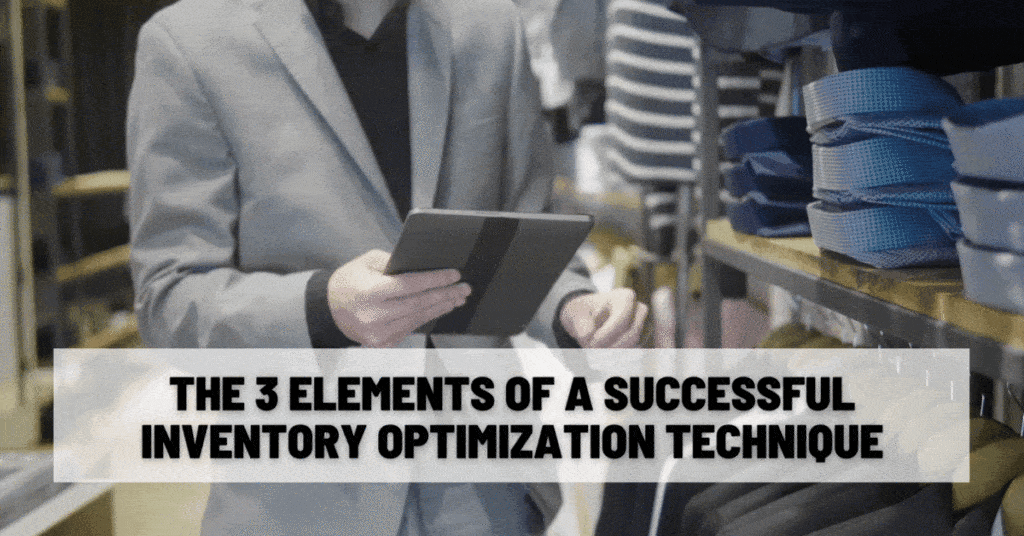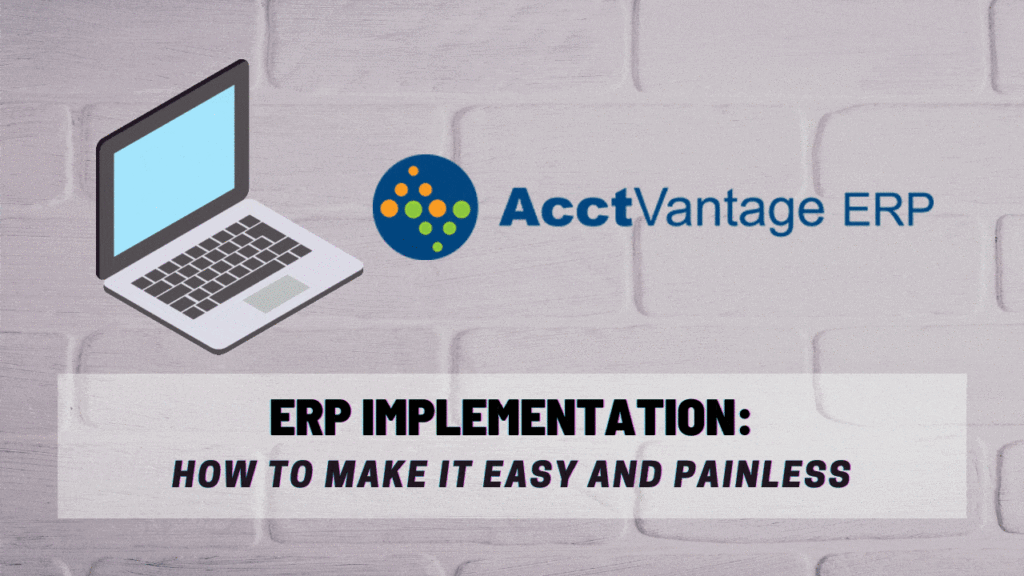3 Elements of a Successful Inventory Optimization Technique
Since we’ve already talked about inventory control systems, inventory management, inventory tracking, and so on, the next level is inventory optimization. (And most importantly, the 3 elements of successful inventory optimization. See below.)
So, what’s inventory optimization, then? Well, let’s put it this way:
According to the US Census Bureau, in 2021 the average American business was holding $1.39 worth of inventory for every $1 worth they could expect to sell.
Inventory optimization is how you get your 39 cents on the dollar back.

Taking It to the Next Level with Inventory Optimization
Concepts like inventory management, while plenty broad, are mostly internally focused. It’s about knowing what’s going on in your warehouse and improving your business’ efficiency.
That’s all great (and very important), but if you’re meeting your progress metrics on all that, what’s left? Do you just stop improving?
Of course not.
If you’re already doing everything right, it’s time to identify what everyone else is doing wrong, and get ahead of it.
Inventory optimization involves analyzing every foreseeable factor in your supply and demand, as far into the future as you can.
Does a critical raw material have a seasonal lead time? Then you’d better anticipate the major demand spikes for the product it goes into. You’ll want to put your orders in ahead of time, and a warehouse full of components for a product that doesn’t sell during this season is no good to you.
Do some of your vendors operate out of China? Then you should check when the Chinese New Year lands this year. Lots of Chinese businesses shut down production for the entire 15-day festival.
Is your marketing team planning a campaign? Then you’d better make sure they give you plenty of forewarning. You’ll need to stock up for the demand spike.
Inventory optimization involves looking at all these factors and more, throughout your supply chain and customer base, to predict fluctuations in supply and demand.
Ideally, you can know the future well enough to prepare for it well ahead of time, and never have more on your shelves than you can sell.

How to Implement Inventory Optimization Without Falling Behind
Alright, enough generalities; it’s brass tacks time.
How do you “do” inventory optimization? Like, in a practical sense?
It boils down to three general elements:
- Demand forecasting: Using historical demand data and foreseeable outside forces to predict demand fluctuations well before they happen. Much like weather forecasting, this is never going to be 100% accurate. There’s just too many variables. But the process is getting more reliable all the time, and not trying at all could be a major mistake.
- Inventory policy: What you keep in stock when, how much of it you keep on hand vs. in storage, and where you keep it in your warehouse(s). The approaches to inventory policy range from straightforward to straight-up Byzantine. Generally, you’ll need a more complex inventory policy if you stock a lot of seasonal products, or if many of your products have short life cycles (like a cutting-edge tech company).
- Replenishment: First, you use demand forecasting to figure out what you need to order and how much. Then, your inventory policy determines how much of it will go on your shelves, in storage, into your assembly line, etc. as well as when it moves from one of those places to another. Finally, after all that data gathering and planning, replenishment is the process of actually ordering, tracking, and receiving new inventory from your suppliers. This is where you factor in supplier lead time and supplier reliability.
To find out how AcctVantage ERP can support your ongoing business growth and success, click here to get in touch with us.




